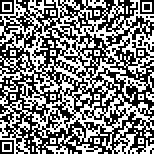下载中心
优秀审稿专家
优秀论文
相关链接
摘要

Landsat系列卫星自1972发射以来,已经连续提供了40多年的中等分辨率多光谱遥感数据,广泛应用于农业、水资源管理、灾害响应等领域.目前,很多研究人员开始考虑利用这些数据开展中分辨率尺度的长时间序列地表定量信息监测,更加精细地反映局地甚至全球气候变化.开展这些研究的前提在于对数据进行辐射定标,并通过不同卫星的交叉辐射传递保证数据辐射精度的一致性.从Landsat 1到Landsat 8,随着遥感器性能和数据获取能力的提升,辐射定标方法不断更新,涉及发射前实验室定标、内定标灯方法、全孔径太阳定标器方法、交叉定标方法、场地定标方法等.本文在对Landsat系列卫星的遥感器性能进行分类、归纳、对比的基础上,系统梳理了Landsat系列卫星遥感器辐射定标方法发展过程以及不同定标方法的优缺点,特别是对定标精度的影响.Landsat系列卫星辐射定标的发展过程为遥感数据高精度定量化应用提供了非常重要的基础,未来辐射定标方法不但要随着新型遥感器研制而更新,更要注重多源遥感数据的交叉验证以及全过程辐射定标方法的完善与应用,保障遥感数据辐射定标精度的一致性.
Sensors of Landsat mission satellites have systemically acquired moderate-resolution multispectral images of the Earth for more than 40 years since Landsat 1 was launched in 1972. The images have been extensively applied, such as in global change, agriculture, forestry, geology, resource management, geography, cartography, and coastal research. These successive images are important to characterize and detect changes in land cover and land use worldwide. Many studies consider these data to perform long-term monitoring of the quantitative information of surface on medium-resolution scales to reflect refined climate change in local or even global scale. The premise of these studies is to conduct radiometric calibration of long sequential data over decades and ensure the consistency of sequential data radiation through cross calibration of different satellites. Radiometric calibrations are constantly updated from Landsat 1 to Landsat 8. Moreover, sensor performance and data acquisition abilities are improved, which involve preflight calibration, internal lamp calibrator, full aperture solar calibrator, cross calibration method, and vicarious calibration based on test sites. This review classified the sensors of Landsat mission satellites based on their performance. Their imaging modes were summarized and compared to determine the advantages and disadvantages of each mode. Then, the development of various radiometric calibration methods was reviewed. The merits and demerits of these methods, as well as the impacts on the accuracy of calibration results, were analyzed. During prelaunch, the calibration of various sensors was mainly based on calibrated integrating sphere. The difference in the time between the integrating sphere calibration and that of sensor calibration caused calibration uncertainty to a certain degree. The consistency of calibration time improved calibration accuracy by approximately 10%. The main calibration equipment comprised lamps and solar calibrator systems during in-orbit. With the advancement from Landsat 4 to Landsat 5, the number of lamps on TM increased from 2 to 3, and the solar calibrator system was accordingly refined, which expanded to full aperture on L7/ETM+. Vicarious calibration between Landsat 4 and Landsat 5, Landsat 5 and Landsat 7 also provided important calibration reference. With the advent of Landsat 8, the holistic assessment system was incorporated into ground station Internet Authentication Service (IAS), which firstly finished in Landsat 7, and specific calibration parameters were stored in calibration and bias parameter files. IAS was expanded toward previous data of Landsat 5 TM, Landsat 4 TM, and L1-L5 MSS.To widen the quantitative application of remote sensing data, radiometric calibration methods were varied along with the development of remote sensors. Moreover, the cross calibration and validation of multi-source remote sensing data and the perfection of the entire radiometric calibration process were realized. In specific, preflight, on-orbit, and vicarious calibrations were performed. Any individual calibration step affected the calibration accuracy;therefore, subsequent research should attempt to reduce the error in each process. Moreover, basing from the calibration situation in China, the authors emphasized the construction of standard radiation transfer and research, strengthened on-orbit calibration methods and calibration equipment, accelerated the construction of the ground radiometric calibration field, and attached importance to the normalization of multi-remote sensing data.

